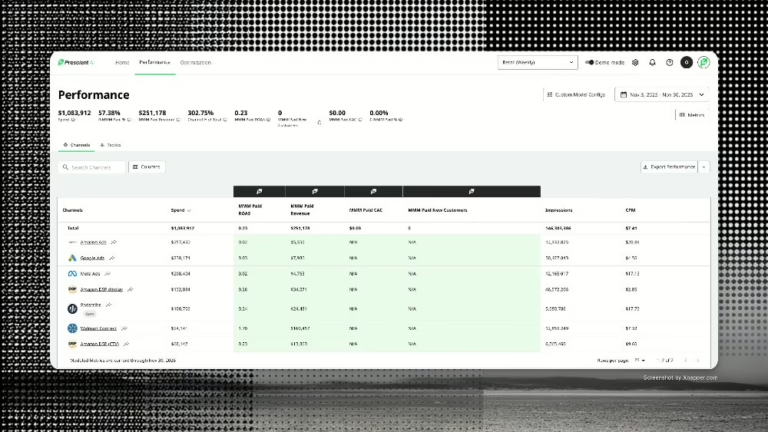Ever found yourself humming a jingle days after you heard it on the radio? That catchy tune isn’t just stuck in your head—it’s demonstrating one of marketing’s most powerful phenomena. Like these “earworms” that continue playing in your mind long after the radio stops, marketing campaigns influence consumer behavior well beyond their active period. The frequency diminishes over time, but that initial exposure keeps working its magic. This lingering influence is exactly what marketers call a carryover effect, and understanding it could revolutionize how you approach your campaigns.
What are carryover effects in marketing?
Carryover effects are the continued influence of marketing activities after their conclusion. While that Facebook ad might have stopped running last week, its impact continues to ripple through your target audience’s behavior today, tomorrow, and potentially for weeks to come. Unlike the immediate responses marketers often fixate on, carryover effects represent a campaign’s extended reach into the future.
These effects manifest in various ways throughout the customer journey. A prospect might see your display ad today but not convert until next week. Your YouTube campaign could build brand awareness that leads to organic searches months later. And that podcast sponsorship? It might trigger word-of-mouth conversations that bring in customers who never even heard the original ad. Understanding these delayed responses provides a more complete picture of your marketing’s true impact.
Marketers often underestimate these effects, assuming that when a campaign ends, so does its influence. The reality is more complex—each marketing activity creates an “ad stock” that gradually depletes over time, similar to how an earworm slowly fades from memory. Some campaigns create effects that dissipate within days, while others might influence consumer behavior for months, particularly those focused on brand building rather than immediate conversion.
The challenge carryover effects present for marketers
When you can’t see the full timeline of your marketing impact, you’re essentially flying blind with your budget decisions. Carryover effects create a significant measurement challenge because traditional reporting tools focus on immediate performance, capturing only a fraction of a campaign’s total value. This myopic view leads to undervaluing campaigns—especially top-of-funnel initiatives—that drive substantial long-term revenue.
The consequences of this measurement gap are costly. Marketing teams frequently cut campaigns that appear ineffective in the short term but would have delivered significant long-tail value. Conversely, they might over-invest in campaigns showing strong immediate results but minimal lasting impact. Without visibility into how marketing effects decay over time, these decisions remain dangerously subjective.
Platform reporting only compounds this problem. Social media platforms and ad networks optimize for and report on short attribution windows, giving marketers little insight into how campaigns influence behavior beyond these artificial timeframes. This creates a disconnect between reported performance and actual business outcomes, leaving marketers to make critical budget decisions with incomplete information.
How marketing measurement has evolved to address carryover effects
Marketing measurement has undergone a remarkable evolution in addressing these timing challenges. The journey began with simplistic last-click attribution models that assigned all credit to the final touchpoint before conversion. This approach, while straightforward, completely ignored the carryover effects from earlier interactions, leading marketers to underfund critical awareness-building campaigns.
Multi-touch attribution (MTA) emerged as a more sophisticated alternative, attempting to distribute credit across multiple touchpoints in a customer journey. However, even MTA models struggle with carryover effects because they rely heavily on user tracking, which has become increasingly limited due to privacy regulations and cookie deprecation. As these tracking capabilities diminish, so does MTA’s ability to capture the full scope of marketing impact.
Marketing mix modeling represents the next frontier in measurement, using statistical methods to determine marketing effectiveness without relying on individual user tracking. Unlike pixel-based approaches, marketing mix models (MMMs) can capture the complex decay patterns unique to each marketing channel and campaign. Prescient AI’s approach takes this a step further by deploying advanced modeling that recognizes that campaigns don’t all decay at the same rate or in the same pattern, providing a more accurate picture of true marketing impact.
Why understanding carryover effects matters for marketing success
Recognizing carryover effects fundamentally changes how you evaluate and optimize marketing spend. When marketers understand the full timeline of their impact, budget allocations shift from channels that merely appear efficient to those truly driving long-term revenue. This perspective prevents the common mistake of cutting upper-funnel campaigns that might not drive immediate conversions but create substantial delayed effects.
Carryover effects also reveal the true relationship between your marketing channels. That display campaign might not directly convert customers, but it could significantly amplify the performance of your search campaigns weeks later. Without measuring these interactions, marketers risk treating channels as isolated entities rather than components of an interconnected system, leading to suboptimal allocation decisions.
The timing of your campaigns becomes strategically important when carryover effects enter the equation. Understanding how long your marketing impact persists helps determine optimal frequency, flight timing, and the balance between brand and performance initiatives. This knowledge transforms marketing planning from guesswork into a science, allowing teams to design campaign schedules that maintain consistent influence while avoiding diminishing returns.
How Prescient AI helps marketers leverage carryover effects
Rather than treating all marketing effects as immediate or assuming uniform decay patterns, Prescient AI’s platform captures the unique carryover patterns of each campaign. Our dashboard visualizes how your campaigns’ influence persists over time, revealing which initiatives create lasting impact versus those that deliver only short-term results. This granular understanding enables marketers to make more informed decisions about where to invest their limited budgets.
The platform’s optimization capabilities automatically incorporate these carryover insights when recommending budget allocations. Instead of chasing immediate ROAS, Prescient considers how today’s spend will continue generating revenue in the future. For example, our dashboard might reveal that your YouTube prospecting campaign, despite modest initial returns, actually outperforms your Meta retargeting campaign when accounting for its three-week carryover effect and halo impact on branded search.
Implementing these insights doesn’t require guesswork. Prescient’s Optimizer tool simulates how adjusting your spend would affect both immediate and future revenue, helping marketers find the optimal balance. This approach prevents the common trap of over-optimizing for short-term metrics at the expense of sustainable growth. The result is a more strategic approach to media planning that captures the full value of your marketing investments instead of leaving money on the table.
Wrapping it up…
Just as that catchy jingle eventually fades from memory, all marketing effects gradually diminish over time. But recognizing and measuring these carryover effects completely transforms how marketers understand their impact. The ability to quantify how long your campaigns continue influencing consumer behavior—and to what degree—provides a competitive advantage in an increasingly complex digital landscape.
Marketers who ignore carryover effects are making nearsighted optimizations that potentially cost them in long-term revenue. Those who embrace sophisticated measurement capture the full timeline of their impact, leading to more accurate attribution and more effective budget allocation. The result isn’t just better metrics—it’s tangible business growth.
Ready to see the full picture of your marketing impact? Book a demo with Prescient AI today to discover how our platform can help you measure carryover effects and optimize your media spend for both immediate results and long-term success.

